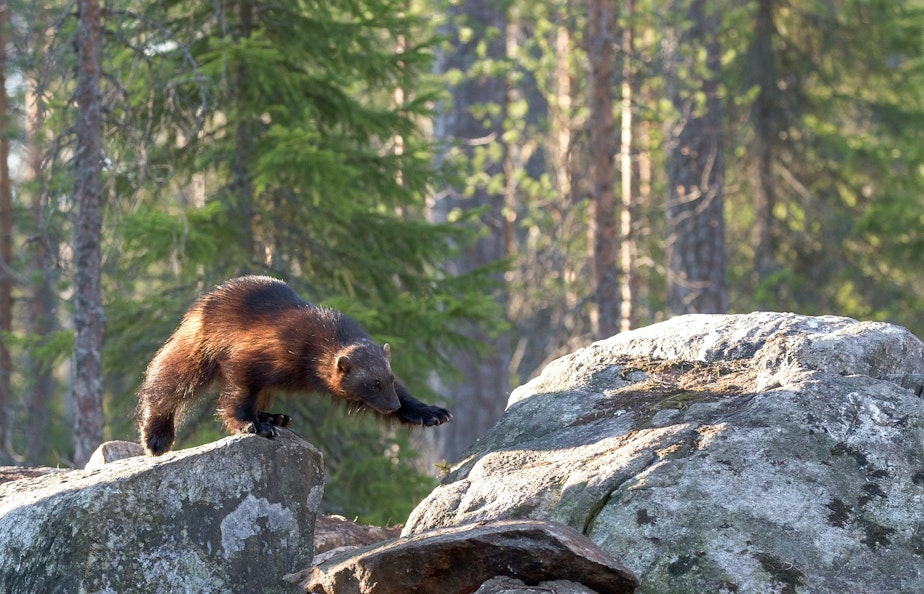Few and far between, endangered wolverines are difficult to track

Wolverines in the contiguous United States were listed as threatened by U.S. Fish and Wildlife last week.
The mammals, which are the largest member of the terrestrial weasel family and look like a small bear, are incredibly difficult to track and understand.
"I knew that they were a mythological creature for most people, because most people will never see them. But I was lucky to see their tracks in the Cascades," Stephanie Williams said when asked about the first time she saw wolverine tracks.
Williams is the co-founder of the Cascades Wolverine Project, an organization of field scientists and outdoor enthusiasts based in the Methow Valley who track the animal via remote cameras.
Before her work as a field researcher, she worked in the outdoor industry and was ski touring with her husband just east of Stevens Pass and she saw some large paw prints in the snow.
"I think my curiosity was sparked right away that we were sharing habitat with this creature," Williams said. "What the heck were they doing in this in this place? It didn't seem like there was a whole lot of food around. I really didn't know anything about wolverines at that time."
Sponsored
She immediately had some affinity for the animal. For one, she was from Michigan, called the Wolverine State even though the animal was eradicated from the Midwest.
Wolverines also shared the spaces Williams loves — rugged, snowy mountains.
"I think that drew me into applying what I know about how to get around in the mountains on skis to try to learn about an animal that really represents wildness," she said.
Cascades Wolverines Project employs an unusual method to track wolverines — attract the animals towards a camera in remote locations with the help of a scent lure and road kill.
The lure appeals to the animal's sense of smell and the roadkill to its scavenger mentality.
Sponsored
Once at the lure, the wolverine goes through an obstacle course to get close to the food.
"The end is a DNA collection device, just something that will grab onto their hair, and then a crossbar so that they'll put their paws up on this bar," Williams said. "We'll take a picture of this posture, and it'll show that wolverine chest blaze that tells us who the individual is, because every wolverine's chest blazes unique."
The organization runs 10 to 12 stations throughout remote spaces in the North Cascades that take hours to reach via skis, snowmobiles, and occasionally, ferries.
Williams considers one wolverine detection a season a success.
Wolverines in Washington were killed off by humans in the early 20th century, but were reported in the North Cascades in the 1990s.
Sponsored
Estimates of the population today are around 30 to 40 individuals in Washington, but Williams said that there could be up to 50 individuals.
"We really don't know how many wolverines currently live in the Cascades, which makes it pretty challenging to help this species recover, which is now a federal mandate, because they're listed as threatened," she said.
Climate change poses a risk to wolverines because they require snow pack to den and raise young.
Cascades Wolverine Project also wants to better understand wolverines threshold to human activities, like roadways and recreation.
"These are questions that will be need to be answered in order to actually have a path forward for recovery," Williams said.





